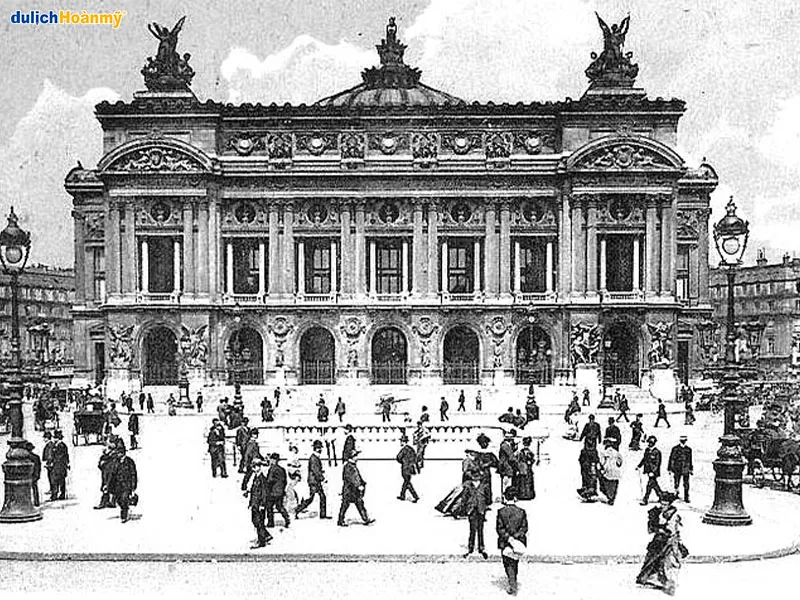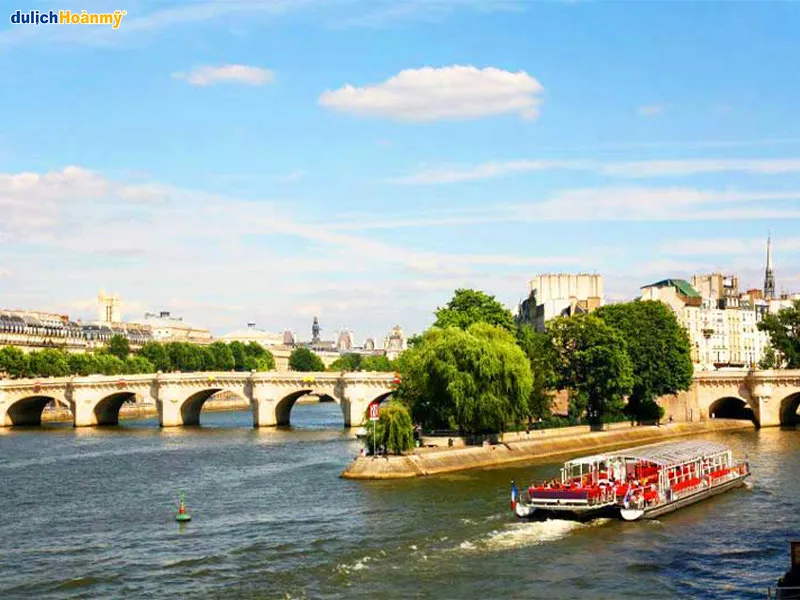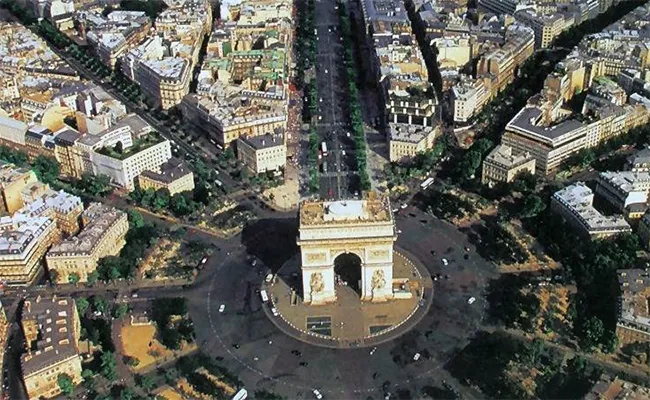The Opéra Garnier, a magnificent architectural gem nestled in the heart of romantic Paris, is more than just an opera house; it’s a cultural icon of France and Europe. With a capacity of over 2,000 spectators, the Opéra Garnier stands as one of the world’s largest and most opulent theaters. Join us to uncover the wonders this opera house offers, from its classical architecture to its world-class artistic performances.
The Glorious History of Opéra Garnier
The Opéra Garnier, also known as Palais Garnier, carries a rich history filled with ups and downs and fascinating stories.
From Idea to Reality
In 1858, Emperor Napoléon III decided to build a new opera house as part of his ambitious Paris reconstruction project. Baron Haussmann was tasked with re-planning the area, and young architect Charles Garnier won the design competition in 1861.

Garnier created a unique architectural masterpiece, blending Baroque, Classicism, and Renaissance styles, resulting in a splendid and magnificent whole.
Challenges and Delays
The construction of the opera house faced numerous difficulties, including the discovery of a swamp beneath the foundation, requiring months of drainage. The Franco-Prussian War and the collapse of the Second Empire also caused prolonged interruptions.
However, after the Théâtre de l’Académie Royale de Musique was destroyed by fire, the construction of Opéra Garnier was expedited. The opera house officially opened on January 15, 1875, and quickly became a symbol of Paris.
Name and Changes
Initially, the opera house was named Académie Nationale de Musique – Théâtre de l’Opéra. In 1978, it was renamed Théâtre Nationale de l’Opéra de Paris, and since 1989, it has officially been called Opéra Garnier. However, Parisians still commonly refer to it as the Paris Opera House.
The Unique Architecture of Opéra Garnier
The architecture of Opéra Garnier is a stunning fusion of different styles, creating a luxurious and breathtaking aesthetic.
Napoléon III Style
The opera house was built in the Napoléon III style, an eclectic style combining elements from Baroque, Palladian Classicism, and Renaissance architecture. This combination creates a magnificent and lavish space, reflecting the wealth and power of the empire.
Impressive Facade
The facade of the opera house is an architectural masterpiece, featuring multi-colored marble friezes, rows of columns, and opulent statues depicting Greek deities. Seventeen different materials were used to construct this facade, creating a visually stunning effect.
Lavish Interior
Inside the opera house, every space is meticulously and lavishly decorated. Garnier used various decorative materials, such as marble, stone, porphyry, and gilded bronze, to create an overwhelming effect for visitors.
The ceiling is adorned with a large painting by Marc Chagall, created in 1964, adding a modern touch to the classical space.
Experiencing a Tour of Opéra Garnier
Visiting Opéra Garnier is an unmissable experience when in Paris. Visitors can explore the magnificent spaces of the opera house and learn about its history and unique architecture.
Self-Guided Tour
Visitors can purchase tickets for a self-guided tour to explore the opera house at their own pace. The tour will take you through the main areas of the opera house, including:
- Grand Escalier (Grand Staircase): A magnificent double staircase in white marble, leading to the upper floors of the opera house.
- Grand Foyer (Grand Hall): A majestic space with a high ceiling, murals, and splendid crystal chandeliers.
- Auditorium: The main hall of the opera house, with a capacity of over 2,000 people, decorated in red velvet and gold.
- Bibliothèque-Musée de l’Opéra (Opera Library-Museum): A place that preserves historical documents, design drawings, and artifacts related to the history of the opera house.
Guided Tour
For a deeper understanding of the history and architecture of the opera house, visitors can join a guided tour. Guides will share fascinating stories about the opera house and help you discover details you might miss on a self-guided tour.
Watching a Performance
Of course, the most wonderful experience at Opéra Garnier is watching an opera or ballet performance. The opera house regularly hosts high-quality performances, featuring leading artists from around the world.
Nearby Attractions to Opéra Garnier
The area surrounding Opéra Garnier has many other attractive sights, which visitors can combine for a full day of exploring Paris.
Louvre Museum

The Louvre Museum is one of the largest and most famous museums in the world, housing priceless art masterpieces, including Leonardo da Vinci’s Mona Lisa.
Pont des Arts Bridge

Pont des Arts Bridge, also known as the Love Lock Bridge, is a famous romantic spot where couples used to attach love locks to the bridge railings.
Arc de Triomphe

The Arc de Triomphe is a magnificent architectural monument, a symbol of French national pride, located at Place Charles de Gaulle.
Conclusion
The Opéra Garnier is not only a beautiful architectural work but also a cultural symbol of Paris and France. Experiencing a tour of Opéra Garnier will leave visitors with unforgettable impressions of history, architecture, and art. Come and discover this architectural gem to feel its beauty and splendor.